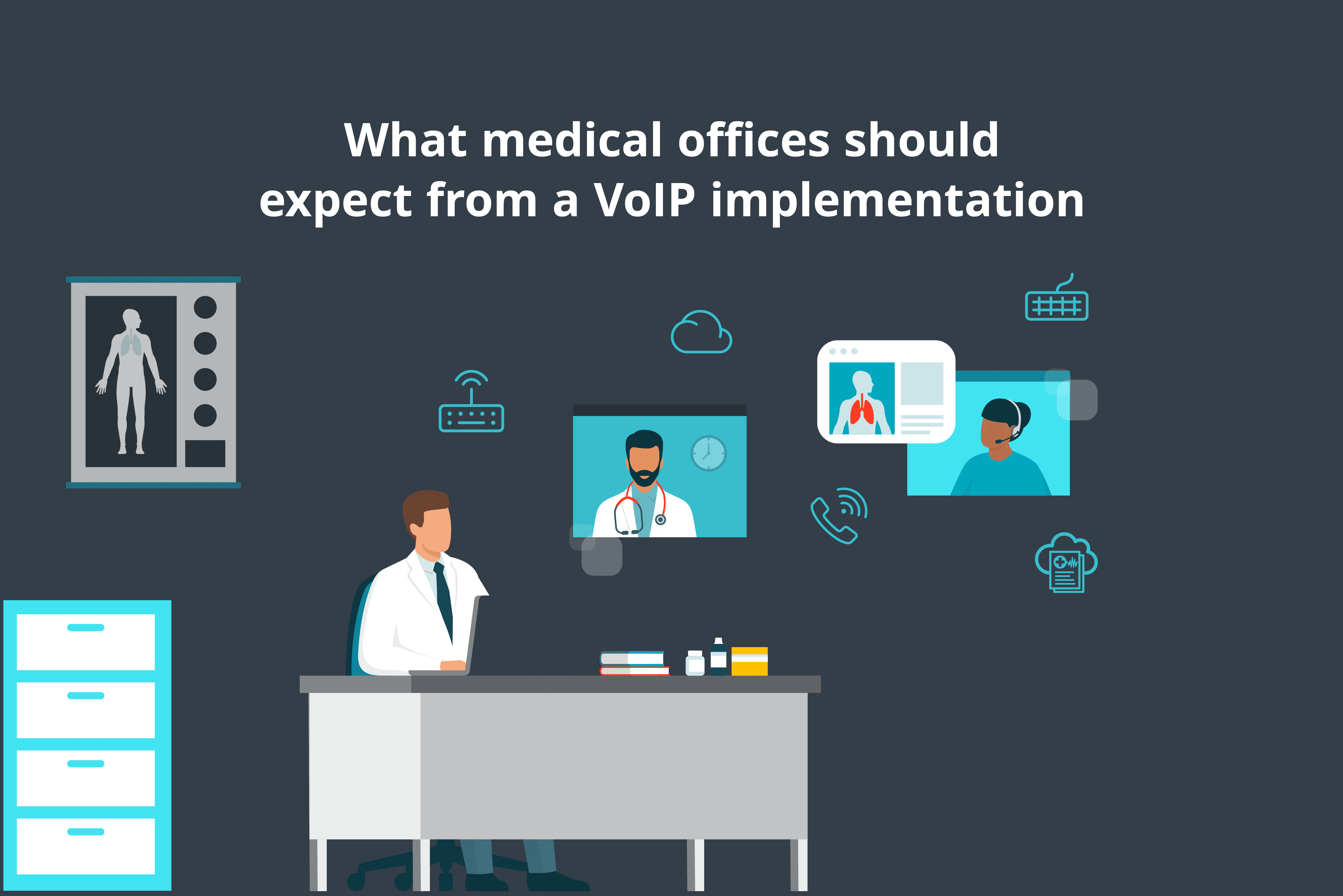Now that you’ve made the decision to upgrade your business phone system to VoIP for medical offices, you’re on your way to reducing costs and streamlining your patient communications.
With cloud PBX, or hosted VoIP, you’ll get all the latest features and functionality of a business phone system all on a subscription basis. No forklift upgrades, no management headaches—ever again. And, all VoIP communications live in a secure cloud, protected by HIPAA’s strict guidelines. So what comes next in your implementation process?
That depends on a few key things, including your network environment, your configuration and its degree of complexity, and, most of all, your service provider.
Your network
Let’s back up for a minute and talk about the significance of your decision to move to hosted VoIP for your medical offices. You’re literally changing from using a hard-wired, premises-based system to one that’s entirely in the cloud and accessed over internet connections.
This means that your doctors will now be able to reach patients on their office phone number even if they aren’t in the office. Your staff can collaborate with other staff members using any of their devices—their smartphones, tablets, or laptops. And most importantly, your patients will always have a reliable means of reaching you. Say goodbye to those long wait times and hello to satisfied patients.
Your configuration
It’s important to note that how you set up your hosted VoIP system can impact how well it works. The number of locations, types of users, number of phones/devices, call flows, and add-ons like call center functionality can all impact the complexity of the deployment and how long it takes to set up. That’s why you need a top-notch service provider.
Your service provider
Your choice of provider means the difference between a successful vs. unsuccessful deployment. So how do you know which service provider is the right one?
There are two kinds of VoIP providers in the market:
- Providers who direct you to their portal to initiate a self-installation and drop-ship the phones for you to plug in and pray it all works.
OR
- Providers who walk beside you through the implementation and make sure that it works to your expectation.
Even if you think you can implement VoIP yourself, there are still some things that need to happen to ensure an optimal outcome.
That’s why we recommend choosing the second type of provider that offers a partnership between the VoIP provider and your IT department, like Broadvoice. Even if our clients have the expertise or simply prefer to self-install, we will still assign them a dedicated resource to help if needed.
What to expect from your VoIP implementation with Broadvoice
At Broadvoice, we believe the success of your implementation starts well before you’ve signed up, let alone before it’s set up. We’ve trained our internal teams and sales partners about what it takes to be VoIP ready and how to ensure your calls, web meetings and chats work every time, all the time.
So, here’s what you should expect from a VoIP implementation with us:
- When we meet with you, we will discuss your business objectives and how we can support them with anywhere, anytime communications. And, we’ll begin building your technology profile, noting all your needs and network environment.
- When you decide to move forward, we’ll confirm that your network is ready to transition to VoIP and add those details to your technology profile. If you’re not ready, we will help with that, too!
- We’ll review your VoIP readiness in a design call, where we will discuss the lines, phones, locations, call flows, etc., that make up your configuration. We will log all decisions into your technology profile.
- We’ll then test to make sure that your network is VoIP ready and everything is working properly. If not, don’t worry—we will work with you to make the necessary adjustments. All test results and any changes will be added to your technology profile.
- If needed, we’ll also do an on-site survey of your network to make doubly sure it’s ready for VoIP before we set an installation date. Again, all new information will be added to your technology profile.
- On installation day, our technicians will come to your health care office to ensure that all your phones and call flows are set up correctly. Your installation workbook will then be added to your technology profile.
- For the next 10 to 15 days, we will take the time to train you and your medical staff on the new system and ensure that it’s all working as promised. Any issues or resolutions will be noted in your technology profile.
So, what is the technology profile?
Good question. We always keep an up-to-date digital file on your business so everyone on our team knows exactly how your hosted VoIP deployment looks—from the network to the configuration to the operation. This information is key to maintaining a quality experience as your health care practice expands and changes.
We strongly believe this is what you should expect from a VoIP implementation, yet many of our competitors don’t offer this high-quality customer service. Few invest, as we have, in solutions architects, technical implementation specialists, service coordinators and installers who are dedicated to your account and to your success. So, why do we do it?
We do it because if your medical practice is successful, we’re successful. And as long as you’re successful, you’ll stay with Broadvoice … and you might tell a friend.









